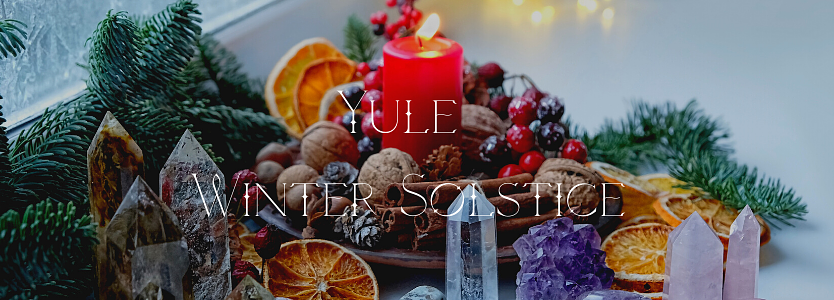One of eight seasonal festivals in the Celtic Wheel of the Year, Yule is the festival marking the death and rebirth of the sun.
As the shortest day and longest night of the year, Yule—also known as the Winter Solstice—is a time for gathering in darkness and honoring the return of light.
In ancestral times, this holiday was marked by great reverence inspiring celebration and feast!
Back when sunlight meant the difference between life and death, the beginning of its triumphant return meant a great deal. So much so that the Celtic people built one of their greatest monuments—Stonehenge—to align perfectly with the sunset on this day.
Yule is a time marked by the ultimate death and rebirthing of life. And while its meaning was once quite literal, it was and still is celebrated symbolically—ushering in a time of deep personal release and renewal.
This year, the dates for Yule or Winter Solstice falls within days of the new moon which we will be covering in a different post but the pull to go within is strong this time of year for multiple reasons. From this point on, the days gradually grow longer as the light returns. However, this is a slow progression – one that demands character building. The dark half of the year can represent challenging seasons in our lives that require strength. Now is the time to explore what that means to you and what that might look like. It’s an invitation to get intentional about our goals as we begin a new lunar cycle and approach a new year.

How to celebrate Yule:
As with all holidays, some symbols are more sacred and useful for this holiday than others. You can probably guess most of the symbols and themes: Reds and greens, evergreen plants, mistletoe, pinecones, candlelight, spiced cider, clove covered apples and oranges, wheat stalks, wreaths, gingerbread, warming earthy scents (frankincense, cedar, clove, cinnamon).
The custom of burning the Yule Log began with the ancient Scandinavians who burned a huge log, felled from and Ash tree, to honour their god Thor. In the Celtic tradition, a continual hearth fire was kept to prevent spirits from entering the home. In order for the fire to keep burning, a large Oak tree was felled and brought into the home where the tree was placed trunk first into the hearth, with the last remnants set aside to burn with next year’s fire. It was also believed that the longer the Yule log burned, the faster the sun would come to warm the earth.
Stones of Yule: Rubies, Bloodstones, Garnets, Emeralds, Diamonds
Activities of Yule: Carolling ~ Wassailing the Trees ~ Burning the Yule Log ~ Decorating the Yule Tree ~ Exchanging Gifts ~ Kissing under the Mistletoe
Deities of Yule:
Goddesses: The Great Mother and Earth Goddess, Freyja, Gaia, Diana, Bona-Dea, Isis, Demeter
Gods: Mabon, The Sun God, The Star (Divine) Child, The Oak King, The Holly King, The Green Man, The Red Man, The Horned One, Odin, Lugh, Apollo, Ra
What Yule traditions and symbols still appear in your Holiday celebrations? Did you know the origin of some of these Yule traditions or did they surprise you? I’d love to hear from you in the comments below!

